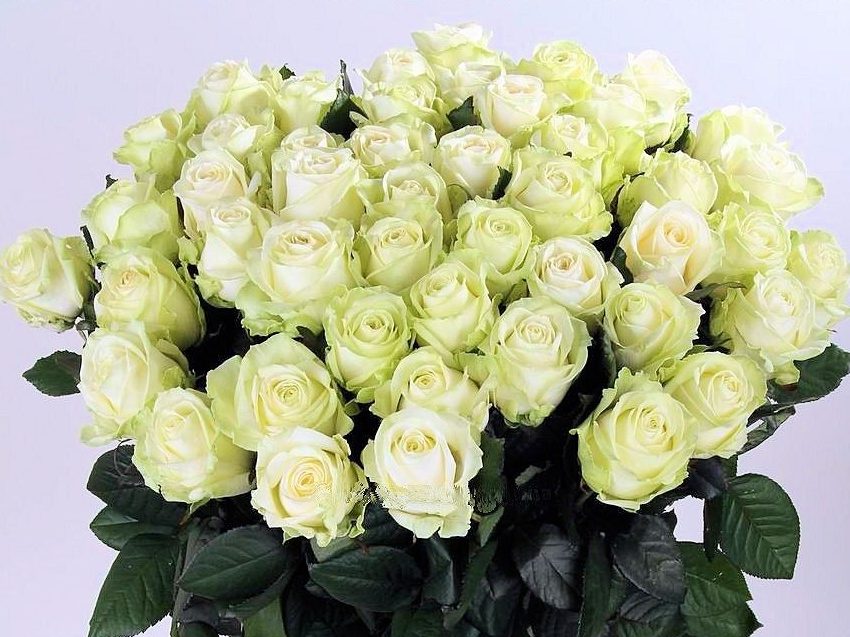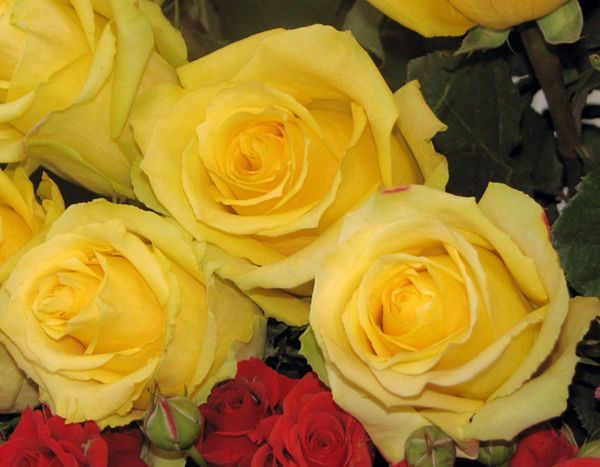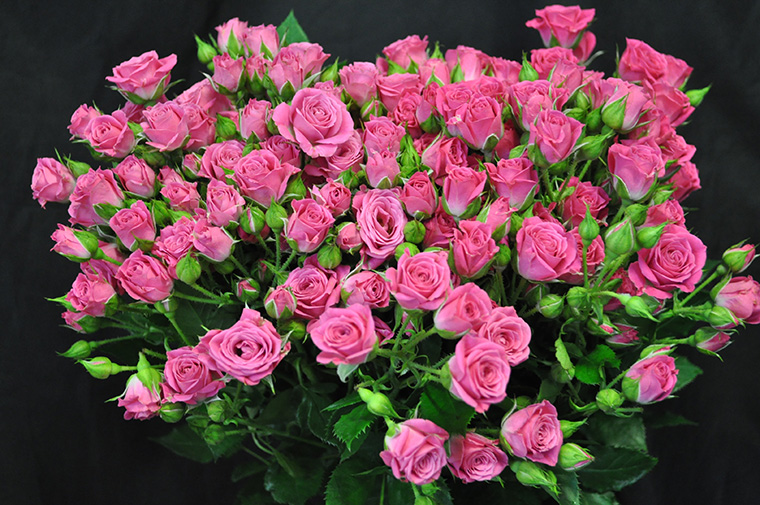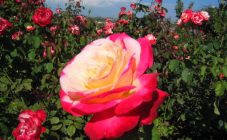Content:
Dutch roses are leading the market, not only in cut but also as seedlings. Despite their capriciousness and whimsical care, they are often bought to decorate the garden and personal plots. In most cases, they can only be grown by growers with experience and great patience.
Description of Dutch roses
White and red Dutch roses have been obtained through repeated selection of different varieties. Thanks to breeders from the Netherlands, the rose bush has turned from a wild-growing flower to an ornamental one. All varieties of Dutch roses belong to the rosehip family. Bushes are divided into two classes: park and garden. Rose Holland is never a park. These are elite varieties grown in gardens that require shelter for the winter.
In general, Dutch roses are not the name of the variety, it is the definition of the country of selection. The Netherlands has long been considered a pioneer country in the development of new decorative flower varieties. The Dutch rose includes many varieties and subspecies. Basically, they are divided into white and red varieties, they can have a great variety of shades.
Most varietal Dutch roses are propagated by cuttings, but you can also use the method of dividing the bush, grafting propagation, etc. Since the climate of the country in which these flowers were bred does not differ in severe frosts, roses are not resistant to cold weather.
TOP 10 Dutch rose varieties
In Russia, Dutch roses are very popular not only in floristry, but also in gardening, as well as in landscape design. New Holland's red and white rose varieties are produced annually by breeding different varieties.
The most common varieties obtained as a result of the work of breeders from the Netherlands are:
- Grand Prix (GrandPrix) is a Dutch red rose, characterized by a high bud, which can reach 9 cm in growth, the diameter of a blossoming flower is 14 cm. By the number of petals, the variety belongs to the double type. On average, there are about 45 of them in one flower. Cut flowers can remain fresh for two weeks, bloom on a bush within 20 days. The ornamental bush begins to bloom in early summer, blooms more than once, the last bloom falls in October. Has a pronounced, floral scent. The bush is considered to be tall and reaches 150 cm in height.
- Avalanche are white Dutch roses. They are distinguished by a rolling color, there is a slight greenish tint at the base. The diameter of the opened bud is 12 cm. The bush is medium-sized, about 80 cm in height, the shoots are powerful, can grow up to 50 cm wide. The first buds appear in early June. Repeated flowering, the last cut can be done in November. Cut flowers retain their freshness for about 14 days, without preservatives. Possesses low resistance to diseases and pests. Does not tolerate high humidity and low temperatures. Due to the white color, it is widely used in floristry to create decorations for weddings.
- El Toro (El Toro) - popular for its unusual petal shape. It is a Dutch bright red rose with corrugated petals. The duration of one flowering is 30 days, the diameter of the blossoming bud is 10 cm. During flowering, the color can change by two tones. Has a mild caramel flavor. The shrub plant is characterized by the absence of thorns.
- Ilios (Ilios) - flowers of lemon color.The variety belongs to the terry type. There are about 40 petals in the bud. When opened, the flower is flat, about 10 cm in diameter. When cut, it can stand up to 10 days. They are not afraid of waterlogging of the soil. Resistant to diseases, frost, odorless.
- Red Naomi (Red Naomi) is a red variety of Dutch roses. The bush reaches a height of 130 cm. The blossoming bud is 12 cm in diameter. It has a strong floral scent. Blooms 2 times per season. The type of rose is double, the bud can contain up to 80 petals. Photophilous. Completely unstable to frost.
- Freedom is a variety of red flowers. The bud is elongated, up to 8 cm high, the shape is goblet. When opened, it reaches 11 cm in diameter. There are about 50 petals in the bud. Tall bush, reaching 120 cm in height.
- Mohana is a variety of yellow roses. The bush does not exceed 1 m in height. In width it grows up to 50 cm. The diameter of the blossoming flower is 10 cm. Resistant to diseases and pests. The variety is characterized by a lack of aroma.
- Wendella - has a snow-white bloom. The variety is frost-resistant, however, requires winter shelter. It blooms several times during the season. The bush is 80 cm in height.One cut rose can reach 70 cm in height.
- High Magic. The flowers are large, up to 12 cm in diameter. They are distinguished by an unusual bright fiery transition color. The height of the bush reaches 1 m. Resistant to diseases. They do not tolerate low air temperatures. They have no aroma.
- Lovely Lydia is a low-growing variety of Dutch roses, distinguished by a pink mix of colors, with a continuous, long flowering. This variety is moderately resistant to disease. It can withstand temperatures down to -30 ° C.
Cultivation techniques and care
When growing roses on the site, you should be prepared for the fact that these are extremely demanding plants.
It is recommended to plant flowers in lighted, sunny areas, protected from through winds. Only the Lovely Lydia variety tolerates drafts normally; most other varieties will reduce the quantity and quality of flowering.
It is recommended to introduce organic matter into the planting pits: compost and wood ash: one rose for a glass of fertilizer.
Before planting, the seedlings can be left for a while in a weak solution of potassium permanganate. This will disinfect the root system of the plant and protect it from some diseases. It is not recommended to plant seedlings in open ground in January and February, as due to the small amount of daylight, the seedlings may not take root.
Dutch roses bloom most abundantly at a temperature of 19 ° C. To achieve a dense flowering in the greenhouse, it is recommended to keep the rose at a temperature of at least 9 ° C before the buds appear and increase it by 2 ° weekly after their appearance, up to 19 ° C. After the flowers have begun to bloom, the temperature can be reduced to 15 ° C.
20 days before the blooming of the buds, such varieties as: Grand Prix, Mohana, High Magic, require fertilization with a nitrogen content. A week after the introduction of nitrogen-containing fertilizing, potassium-phosphorus is introduced.
The soil should be loosened regularly, thus increasing the flow of air to the roots of the plant.
Varieties Avalansh, El Toro, Freedom require chemical treatment against powdery mildew and spider mites.
All varieties must be covered with agrofibre for the winter.
Variety of choice
There are many varieties of Dutch roses. In the absence of experience in growing and keeping roses, it is recommended to start with less whimsical varieties.But even unpretentious roses require quite careful maintenance.
Growing rose bushes is not only a visually beautiful and well-groomed site, but also a fairly profitable business if the correct cultivation techniques and care for these demanding plants are followed.


















